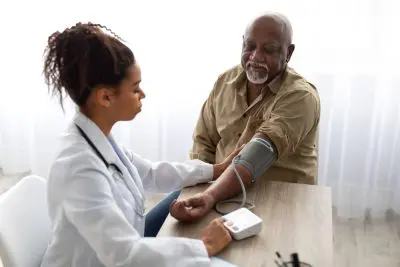The Silent Health Epidemic
Cardiovascular health represents a critical battleground in modern wellness, with blood pressure emerging as a key indicator of overall physiological well-being. Nearly half of the adult population in the United States grapples with the challenges of elevated blood pressure, presenting a significant public health concern that demands innovative approaches to management and prevention.
The Science of Movement and Cardiovascular Health
Groundbreaking research published in leading medical journals reveals a profound connection between physical activity and blood pressure regulation. The emerging scientific consensus suggests that even minimal increases in daily movement can trigger substantial physiological improvements.
Decoding Activity Patterns
Researchers have meticulously categorized human movement into distinct categories to better understand the impact of different levels of activity on health and wellness:
- Sleeping: The period of rest when the body recovers and regenerates, essential for overall health and well-being. Sleep plays a crucial role in cognitive function, mood regulation, and physical health.
- Sedentary behavior: Activities that involve minimal movement, such as sitting or lying down. Prolonged sedentary behavior is linked to negative health outcomes like obesity, heart disease, and diabetes.
- Standing: A position of weight-bearing that is less harmful than sitting for long periods but still does not provide the full benefits of physical activity. Standing can help reduce the risks associated with sedentary behavior but should be combined with movement.
- Slow walking: A light form of activity that engages the body in a gentle way. It promotes blood circulation and helps to reduce the risks associated with sedentary behavior without causing excessive strain.
- Fast walking: A moderate-intensity activity that increases heart rate and engages the cardiovascular system, contributing to improved fitness levels, calorie burning, and overall health.
- Intensive exercise activities: High-intensity workouts that significantly elevate the heart rate and improve physical endurance, strength, and overall cardiovascular health. These activities offer the greatest benefits for building muscle, burning fat, and enhancing metabolic function.
The Remarkable Impact of Minimal Movement
Quantifiable Health Transformations
Comprehensive studies analyzing over 14,000 participants uncovered remarkable insights:
- Average daily exercise: 16 minutes
- Sedentary time: Exceeding 10 hours
- Medication usage for high blood pressure: 25% of participants
- Average blood pressure reading: 132/79 mmHg
Precision in Physical Intervention
Incremental Changes, Significant Results
Research has shown that even small increases in physical activity can lead to notable health improvements:
- 5 minutes of additional exercise can reduce blood pressure: A short burst of physical activity, even as little as 5 minutes, has been shown to help lower blood pressure, particularly when added to a daily routine. This emphasizes that small, consistent efforts can lead to health benefits.
- 21 minutes of activity replacement may decrease systolic pressure by 2 mmHg: Replacing sedentary time with physical activity for just 21 minutes can result in a measurable reduction in systolic blood pressure. This demonstrates that even moderate exercise has immediate effects on cardiovascular health.
- Minimal activity substitution shows measurable cardiovascular benefits: Replacing even brief periods of sitting with light physical movement, such as standing or walking, has been shown to reduce cardiovascular risk factors, including high blood pressure.
Physiological Mechanisms
How Exercise Transforms Cardiovascular Function
Physical activity triggers numerous beneficial biological processes that help improve cardiovascular health:
- Improved organ efficiency: Regular exercise enhances the functioning of vital organs, such as the heart and lungs, improving overall efficiency and reducing strain on the cardiovascular system.
- Enhanced tissue performance: Exercise boosts the performance of muscle tissues, making them more efficient in using oxygen and nutrients, which contributes to better endurance and strength.
- Optimized metabolic processes: Exercise helps regulate metabolism, improving how the body converts food into energy and potentially reducing the risk of metabolic disorders such as diabetes.
- Reduced inflammatory markers: Regular physical activity has anti-inflammatory effects, lowering markers of inflammation in the body, which is crucial for preventing chronic conditions like heart disease.
- Improved blood vessel elasticity: Exercise enhances the flexibility and health of blood vessels, improving blood flow and reducing the strain on the cardiovascular system.
Strategic Activity Implementation
Practical Approaches to Increasing Movement
Different levels of activity can be incorporated into daily life for cardiovascular and overall health benefits:
- Low-Intensity Interventions
- Replace sedentary time with light walking: Opting for brief walking sessions during the day can help reduce sedentary time and improve circulation.
- Incorporate short bursts of movement throughout the day: Adding simple movements like stretching, walking around, or light standing breaks can be a quick way to boost energy and health.
- Use stairs instead of elevators: Taking the stairs helps increase daily physical activity without requiring a specific workout session.
- Park farther from destination entrances: A simple strategy to get more steps in your day by parking farther away from where you need to go, contributing to increased daily movement.
- High-Intensity Strategies
- Implement structured exercise routines: Creating a set schedule for exercise can help maintain consistency, such as setting aside time for workouts.
- Engage in cardiovascular activities: Activities like running, cycling, or swimming help to improve heart health and stamina.
- Explore interval training: High-intensity interval training (HIIT) is an efficient way to get a full-body workout in a short period, boosting cardiovascular health.
- Combine strength and aerobic exercises: A balanced approach that includes both strength training and cardiovascular exercises promotes overall fitness and improves heart health.
Holistic Approach to Blood Pressure Management
Comprehensive Lifestyle Considerations
Managing blood pressure effectively requires more than just physical activity. A holistic approach includes various lifestyle factors:
- Maintaining healthy body weight: Achieving and maintaining a healthy weight can help reduce the risk of high blood pressure and other cardiovascular diseases.
- Reducing alcohol consumption: Excessive alcohol intake is linked to increased blood pressure; reducing it can help manage and prevent hypertension.
- Eliminating tobacco use: Smoking contributes to high blood pressure and cardiovascular disease, so quitting is crucial for heart health.
- Implementing stress management techniques: Chronic stress is a risk factor for hypertension, so adopting strategies like mindfulness, meditation, or relaxation exercises can be beneficial.
- Ensuring consistent medical consultation: Regular check-ups with a healthcare provider are important for monitoring blood pressure and managing potential risks.
Technological and Research Frontiers
Future Exploration
Emerging research and technology continue to advance our understanding of exercise and its effects on cardiovascular health:
- Long-term exercise impacts: Ongoing studies aim to understand the long-term effects of exercise on heart health and how sustained activity can prevent future cardiovascular events.
- Personalized activity interventions: Advances in technology could help tailor exercise programs based on individual health profiles, making activity recommendations more effective.
- Advanced monitoring technologies: Wearable devices and health apps are helping individuals track their physical activity, heart rate, and other health markers, providing real-time feedback on their fitness journey.
- Genetic predisposition understanding: Research into genetics may reveal how an individual’s genetic makeup influences their response to exercise and their risk of heart disease, enabling more personalized health strategies.
Potential Limitations
Current Research Acknowledges
While the research is promising, there are still challenges to overcome:
- Potential data collection variations: Differences in study design, participant populations, and data collection methods can affect the reliability and generalizability of findings.
- Need for diverse participant populations: Ensuring that research includes a diverse range of participants is essential for understanding how exercise affects different demographic groups, including those with varying health conditions.
- Challenges in establishing definitive causal relationships: While correlations between exercise and heart health are well-documented, more research is needed to establish clear cause-and-effect relationships.
Conclusion
The path to cardiovascular wellness is paved with intentional movement. Even minimal physical activity, when consistently incorporated into daily life, can lead to profound health benefits and significantly improve blood pressure management.
Key Takeaways
- Movement is medicine: Regular physical activity is one of the most effective ways to improve cardiovascular health.
- Small changes create significant impact: Even brief periods of physical activity can result in noticeable health benefits.
- Consistency trumps intensity: Consistent, moderate activity can be more beneficial than sporadic intense workouts.
- Individual approach matters most: Tailoring activity to individual preferences and needs is key to maintaining long-term health and wellness.
















